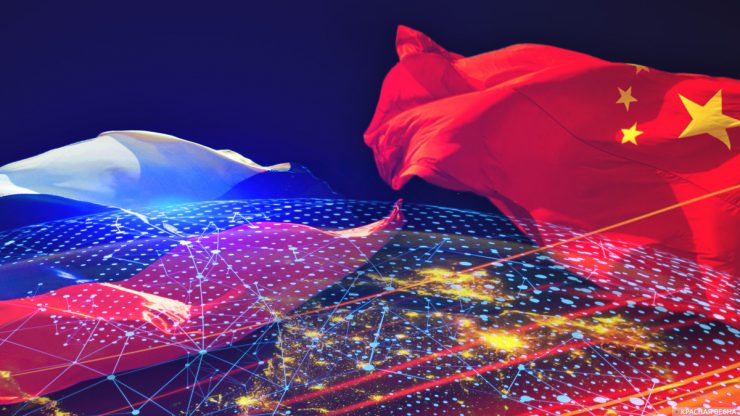
In February, on an unusual visit to Japan, NATO Secretary General Jens Stoltenberg emphasised the need for NATO to have more “friends” in the region. The obvious justification was, as Stoltenberg explained to his audience at Keio University in Tokyo, the fact that Russia and China were “coming closer” and the direct threat this alliance poses to the US-led international order. More obviously, what Stoltenberg said exposed active US attempts to expand the scope of its rivalry with Russia and China beyond Europe to include the Asia-Pacific region. At least this is how Beijing and Russia understood it. Responding to Stoltenberg’s projection of China as a threat, Chinese Foreign Ministry Spokesperson Mao Ning said in February that “NATO has constantly sought to reach beyond its traditional defence zone and scope.” The core purpose of this outreach is to turn the region currently connected by trade and economics into a battlefield where Washington can wage the war for protecting its hegemony.
Secondly, while an obvious purpose is to use the Asia-Pacific region against Russia and China, the US is also manoeuvring to have the Asia-Pacific countries bear upon the ongoing military conflict in Eastern Europe between Russia and Ukraine (and Ukraine’s NATO allies). This was most evident through the visit of Japan’s Prime Minister Fumio Kishida to Ukraine. Whereas this visit stressed Stoltenberg’s quest for NATO “friends” outside of Europe, it also underscored the marked visibility of the internationalisation of the ongoing military conflict in Europe via the Asia-Pacific region itself.
Thirdly, the US is pushing the Asia-Pacific region directly into (Eastern) Europe by sanctioning China for its support for Russia against Ukraine (and NATO). On April 12, the US Commerce Department announced fresh sanctions on more than two dozen Chinese companies for supporting Russia’s military and defence industries. The purpose is to hit Russian military and defence industries with a “tech shortage” to hamper Moscow’s ability to “sustain, repair, and resupply its weaponry [in Ukraine].” Sanctions on China are a charge sheet that highlights China’s indirect involvement in the conflict. Since, thinking from Washing’s perspective, a country located in the Asia-Pacific is already involved in the conflict against the West, it is extremely important for the collective West to take their war to that country, both economically (e.g., sanctions) and militarily (NATOization).
But this increasing ‘geo-politicisation’ of the Indo-Pacific region around Washington’s interests is also an opportunity for Russia and China. If Russia and China were coming closer due to Washington’s active attempts at sabotaging their rise globally, the potential of NATOization of the Indo-Pacific is only facilitating and accelerating this anti-US alliance formation, making it stronger.
It was in 2019 when the Russian president announced that Russia will help China develop a missile attack early warning system, a system that only the US and Russia possess and have operated successfully thus far. Now, the core purpose of this system is not merely to boost China’s defence capacity, but to develop an integrated system of defence region wide. For instance, there is little denying that Russia can use this system to collect data from stations located in its north and west whereas China could collect and provide data from its eastern and southern borders.
In fact, this move is only a part of a series of other moves that both countries are taking jointly and individually. In March, Russian Defence Minister Sergei Shoigu confirmed that a division of Russia’s Bastion coastal defence missile systems has been deployed to Paramushir, one of the Kuril Islands in the North Pacific, some of which Japan claims as its territory. The Minister confirmed that this move was a response to the US efforts to “contain” Russia and China.
“To contain Russia and China, the United States is significantly increasing its military presence in the Asia-Pacific region, strengthening its political and military links with its allies, continuing to create a new American security architecture in this region,” Shoigu said in a video of his address to Russia’s top brass, published by the defence ministry.
Even more recently, the visit of Chinese Defence Minister Li Shangfu to Russia on April 16 to 19 – and Li’s direct meeting with President Putin – showcases the depth of cooperation that currently exists between Moscow and Beijing vis-à-vis their collective politics of creating a multipolar world – an objective that found its most vivid expression during the recent visit of Xi to Moscow.
Pacific received official attention in Moscow when Shoigu went to see President Putin on April 17 (when Li was still in Russia). According to the official transcript, President Putin stressed that developing appropriate military tools for the “Pacific theatre of operations remains relevant”, asking Shoigu to “make sure these efforts [to maintain a robust presence in the Pacific] carry on, while paying special attention to developing other fleets, training troops and holding similar events.”
This NATOization of the Asia-Pacific is inherently dangerous, as it is provoking new forms of military competition. But a crucial question is: can the US really NATOize this region?
For one thing, Asia-Pacific is not Europe. Even though Washington has traditionally played a significant role in this region, recent years have seen a major failure on its part to offer the region what most countries of this region consider to be the most important element of their international relations: regional and international trade. NATOization means militarisation and militarisation entails conflict rather than open trade. Such prospects are more likely to push the region away from the US, just as the US attempts to force the Middle East to adjust itself to the new realities of the US interests has pushed the region to China and Russia much more effectively and decisively than would have been the case otherwise.
Salman Rafi Sheikh, research-analyst of International Relations and Pakistan’s foreign and domestic affairs, exclusively for the online magazine “New Eastern Outlook.“
